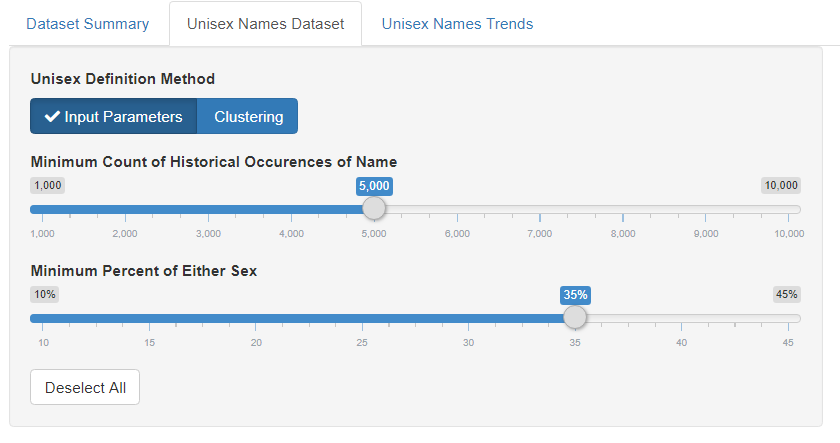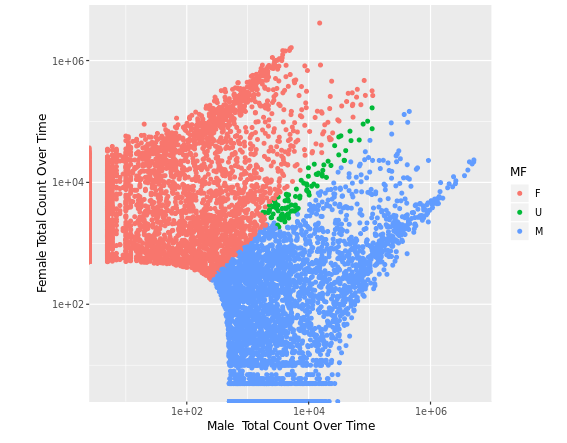Unisex Names Dashboard

Domain Introduction
Gender and naming convention are constantly shifting, from names shifting gender connotation, to the rise of unconventional names in recent years. However, Unisex name and their usage have shifted from being known as names for a certain gender to the other over time, or having a even split of gender usage. This study focused on identify unisex name and the prevalence of those names in the US populace. The analysis was focused on the US Baby Names dataset issued by the Social Security Administration which contains data collected names of babies born in the US from 1880 to 2013. R was used to analyze and visualize the data. The output of this study is an interactive Shiny App that can be used as a research tool in social science that reflects changing attitudes towards genders in the US.
Dataset
The dataset consisted of five columns; year, sex, name, n and prop. The contents of the columns are: Year has numeric values that span from 1880 to 2013, Sex has a character data type and has two possible values, male and female, Name also has character data type and consists of all unique names recorded in the time frame, n shows the number of people holding a certain name and prop shows the percentage of newborns having a certain name from each sex.
Design
Unisex Name Definition

Popularity Metric

Users can select either metric and direction as well as the top N names for that combination. They can also select any set of names (up to 12) to compare from the dataset table.



